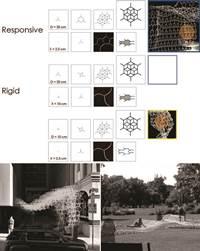Adaptive Architecture: Towards Resiliency in the Built Environment

This paper shares the results of several senior research studios focused on material technologies, kinetics, synthetic biology, and robotics in architectural systems and how technology can empower architecture to connect spaces, users, and environment as one path to resilience.
More specifically, the projects engaged the question of a permeable boundary (interface) by designing responsive spatial boundaries (see the Swarm Space project), programmatically or environmentally responsive modular systems (Augmentum and Remedia[c]tion), resilient dwellings (The Imminent Emergency Defense System), or explored the nature of a productive relationship with the larger ecology (Urban Reef, Charged Landscapes).
Students were encouraged to think in terms of flow and exchange of information, energy and matter rather than in terms of architectural form. The matter (material systems) was viewed as dynamic and active and a form understood as changing. Resulting projects demonstrated how technology could empower architecture to operate as an intelligent interface that connects spaces, users, performance criteria, and environment in real time. The projects looked for more productive as well as creative ways to negotiate the boundary between the natural and the constructed by relying on some of the latest technological and scientific propositions.
This paper discusses possibilities afforded by an integrative approach in which the overlapping of intelligence, material capabilities, and social and ecological issues inspires an approach to designing resilience through adaptability.


Add comment
Log in to post comments